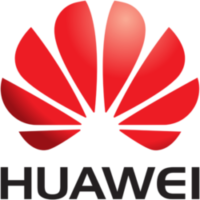Competition in the antenna vendor market is heating up as 5G rolls out and market share is coming under serious pressure. In its recent analysis of the worldwide mobile cellular 4G and 5G antennas market, global tech market advisory firm, ABI Research, finds that Huawei remains the market leader in the base station antenna market, retaining a first place in both the market share and vendor rankings.
Following Huawei, other companies within the top five for market share include, CommScope, Ericsson, Rosenberger, and ACE Technologies. Together, these five vendors comprise more than 70 percent of the total market in terms of revenue. While the names of the top five remain the same, there has been a shuffle in the order with CommScope having taken the second position in 2019.
By the end of 2019, South Korea reported more than 90,000 5G base stations had been deployed and China had built out more than 130,000 5G base stations. “The move toward the 5G rollout is creating new challenges as the antenna and radio must be integrated for optimal utilization of site space and network performance. The successful performance of the 5G network will increasingly depend on the antenna, making antennas an essential component in the operator’s network,” explains Dean Tan, Research Analyst at ABI Research.
ABI Research forecasted growing demand for a higher number of antenna ports, such as 6 and 8 ports and 10-to-16 ports. These two segments will make up more than 80 percent of the antenna shipments by 2025. In preparation for 5G, most antenna vendors (e.g., Huawei, Ericsson, RFS) have released their versions of the Active-Passive antenna or are working with OEMs for its development. This configuration allows for an active or a Massive-Multiple Input Multiple Output (m-MIMO) antenna array to be deployed along with the passive antenna array.
The m-MIMO is key to achieving the higher capacity gains and throughput that 5G is expected to bring. However, challenges, such as limited site space and difficulty of acquiring new sites, requires vendors to develop innovative ideas for the 5G deployment. “With the deployment of 5G, we have seen remarkable growth and innovation in the integrated active antenna segment. To tackle the challenges of 5G deployment, there is a vital need for antenna vendors and OEMs to work closely in an integrated fashion,” says Tan.
Aside from the 5G focus, antenna vendors continue to develop innovative solutions to overcome physical challenges. Kathrein released its “378-antenna platform” that generates air vortices to reduce the wind load experienced by an antenna. Wind load is a key challenge that antenna vendors wrestle with to ensure reliability and safety of the antenna and its tower. “While more 5G deployment is expected to come, operators in emerging and developed Markets are still upgrading and replacing their 4G antenna architecture. Almost 90 percent of antenna sales in 2019 were still catering to the 4G LTE market. But that will change,” adds Jake Saunders, Vice-President for Asia Pacific at ABI Research.
These findings are from ABI Research’s Worldwide Mobile Cellular 4G and 5G Antennas Market application analysis report.




Reader Interactions